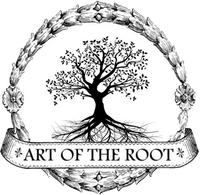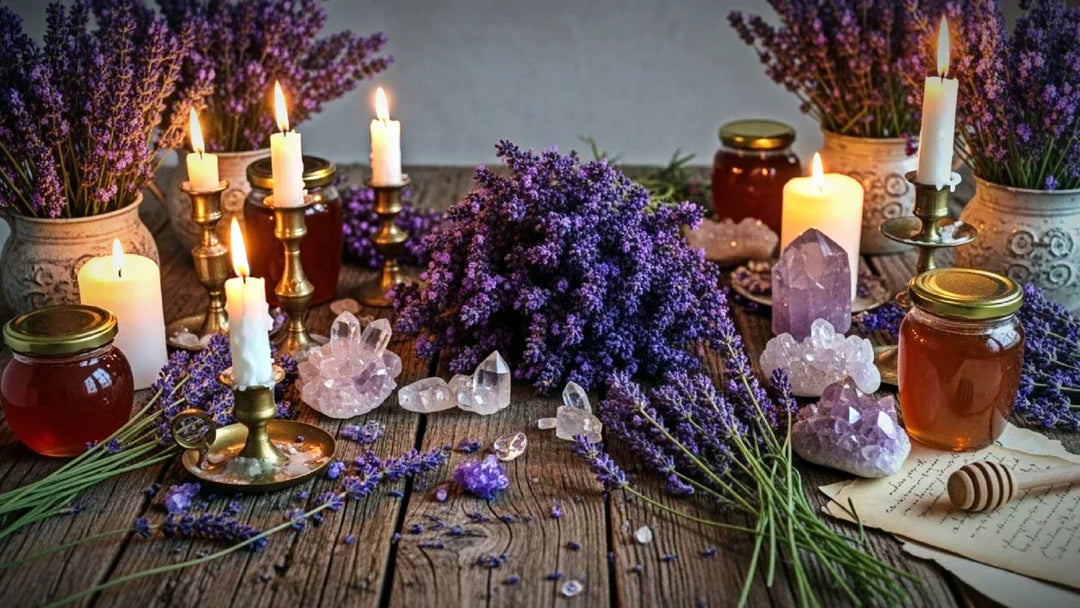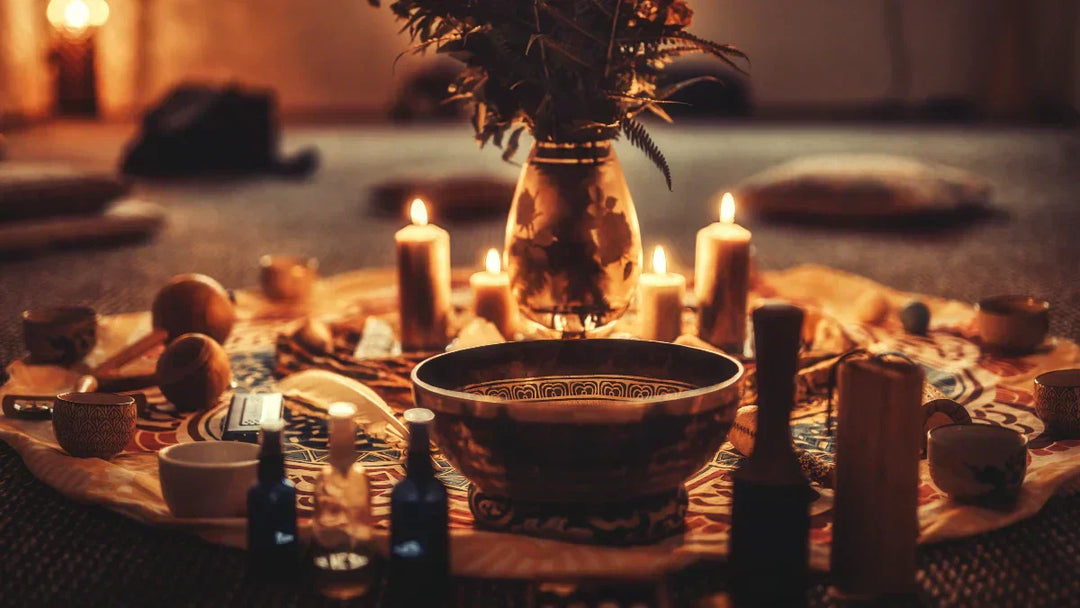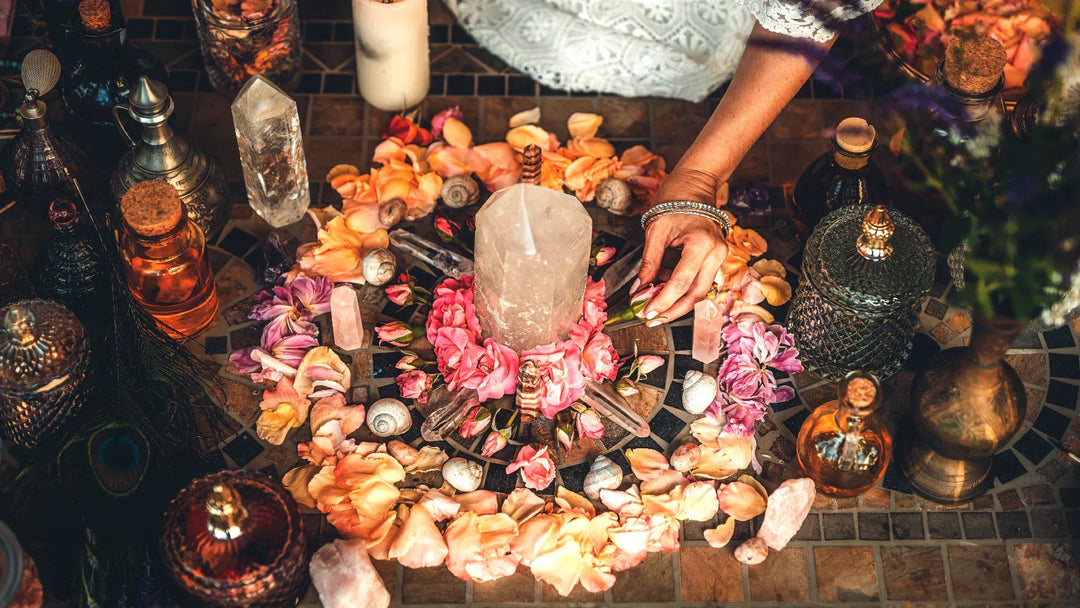There’s something deeply familiar about the way we’re drawn to plants — whether it’s the calming scent of dill in the kitchen, the quiet pull of mistletoe hanging in a doorway, or the earthy grounding of roots steeped in a ritual bath. Many of us know, instinctively, that plants aren’t just ingredients or remedies. They’re alive in a way that goes beyond biology.
In folk magic, witchcraft, and spiritual traditions around the world, plants are more than helpful tools — they’re companions, guides, protectors. Plant spirit work is about recognizing that every herb and root has its own presence, its own intelligence. When we take time to listen, we begin to understand how they want to work with us.
This post is an invitation to explore three different lineages of sacred plants: the mystical mistletoe, the protective and well-loved herbs of the Apiaceae family, and the deeply rooted plants used across African diasporic traditions. Each offers something unique — and together, they form a powerful tapestry of herbal magic, medicine, and relationship.
Mistletoe Magic: Spirit of the In-Between

Mistletoe is one of those plants that has fascinated people for centuries. It grows suspended in the trees, untouched by soil, thriving high above the ground. There’s something otherworldly about it — and for good reason. In many magical systems, mistletoe is seen as a liminal plant: one that belongs to thresholds, boundaries, and sacred transitions.
As Leo Kanner (1939) describes in his historical essay, mistletoe “has occupied a significant place in the religion, magic, folklore, and folk-medicine of many nations” (p. 876). Ancient Roman and Greek writers marveled at its ability to grow without ever touching the earth. Theophrastus noted that mistletoe could not sprout from the soil — only from other trees or, as Pliny claimed, after being eaten and excreted by birds like thrushes (Kanner, 1939, pp. 878–882).
This unusual life cycle reinforced its role as a sacred mystery. In Druidic traditions, mistletoe harvested from oak trees was considered especially potent. It was used in fertility rites, spiritual healing, and rituals designed to open vision or ward off harm. Even today, it’s a powerful ally for those working with dreams, ancestral connection, or moments of transition.
How to Work with Mistletoe:
-
Hang it over doorways to guard spiritual thresholds.
-
Place it on your altar during solstice or eclipse rites for clarity and stillness.
-
Meditate with it (ethically sourced, always) when seeking guidance from spirit or ancestors.
Mistletoe teaches patience. It reminds us that magic often blooms in quiet places — and that transformation begins not in the soil, but in the space between.
The Apiaceae Family: Hearth Herbs with Protective Power

The next time you reach for fennel or dill in your spice cabinet, you might want to pause — because these everyday herbs have deep magical roots. The Apiaceae family (once called Umbelliferae) includes angelica, caraway, parsley, and more. These plants have long histories of being used in charms, rituals, and remedies for both the body and the spirit.
Mildred Mathias (1994), in her beautiful overview of herbal folklore, shares that these herbs were “thought to provide protection against evil and witchcraft” (p. 4). In medieval Europe, dill was believed to shield children from wandering spirits, and it was burned in spells to break hexes. Angelica, named for the Archangel Michael, was said to bloom on his feast day, and carrying the root was thought to protect against disease and sorcery (p. 4).
Caraway, too, had its magical uses. People believed it could keep lovers faithful and pigeons from flying away. Seeds were added to the food of the dead or scattered under beds to ward off malevolent spirits (Mathias, 1994, p. 5). These weren’t just superstitions — they were lived relationships with plants as guardians of the home and spirit.
How to Work with Angelica, Caraway, and Parsley:
-
Add angelica root to a charm bag for strength and spiritual protection.
-
Burn dill and bay leaves together to clear out residual energy from your space.
-
Sprinkle caraway seeds near thresholds to keep your spiritual boundaries intact.
These are herbs of the hearth — familiar, comforting, and quietly potent. They don’t demand attention, but they work deeply and consistently, especially when approached with respect.
Root Magic and Diasporic Wisdom

In the spiritual traditions of the African diaspora — including practices like Obeah, rootwork, and Hoodoo — plants are seen not just as tools, but as spiritual beings. Working with them is a sacred relationship. These herbs don’t just assist — they act, protect, and speak.
One of the plants often used for this purpose was asafoetida — a pungent resin used in both African and Appalachian traditions to drive away sickness and evil spirits. Mathias (1994) explains that people would wear asafoetida in a bag around the neck “to ward off disease,” and that its powerful smell was thought to repel negative forces (p. 4). Other plants like coriander and various bitter roots were used in baths, oils, and powders to protect the body and spirit.
These traditions remind us that plants are not passive. They are participants in our magic — and when treated with reverence, they offer fierce protection and insight.
How to Work with Asafoetida:
-
Add a pinch of asafoetida to a ritual floor wash for deep cleansing.
-
Burn coriander seeds during spiritual work to clear psychic clutter.
-
Use bitter roots (with care and knowledge) in protection and banishing spells — and speak to the spirit of the root before using it.
Building Relationships with Plant Spirits
The key to working with plant spirits is a relationship. You don’t need to know everything before you begin — but you do need to approach with honesty and care.
Ways to Start:
-
Offer first. A drop of water, a word of thanks, a moment of presence.
-
Speak aloud. Tell the plant why you’re there. Ask for permission.
-
Pay attention. Listen for sensations, dreams, changes in mood or energy.
-
Keep a journal. Document each plant you work with and what comes through.
When we begin to treat herbs as living companions instead of “materials,” the entire tone of our practice changes. We start to remember something our ancestors knew well — that the plants are not just with us. They are waiting for us.
How Plant Spirits Live in Our Favorite Magical Products
One of the most beautiful ways plant spirits continue to support us is through ritual tools like conjure oils, fixed candles, herbal bath blends, and spell jars. These aren’t just aesthetic products — when made properly, they are vessels of living plant energy, prayed over, blessed, and charged with intention.
For example, angelica root might be added to a protection oil to call in spiritual guardians, while caraway and coriander seeds are often found in attraction or road-opening blends, drawing clarity and movement where things have felt blocked. Mistletoe, though used more cautiously due to its potency, is sometimes incorporated into spirit communication oils or sprinkled around an ancestor altar for protection and heightened vision.
In traditions like Hoodoo or folk magic, these ingredients are not used passively — they are spoken to, sung over, and infused with prayer. A conjure oil might be prayed over daily for a full cycle of the moon, or a candle might be dressed with herbs and fixed with petition papers, anointed with intention, and lit as a conversation between practitioner and spirit.
Here are just a few magical product ideas that highlight these plant spirits:
-
Spirit Gateway Oil – infused with mistletoe, mugwort, and myrrh; used to anoint divination tools or altar space for ancestral work.
-
Home Blessing Herbal Candle – dressed with dill, caraway, and angelica; fixed with a prayer for protection and peace in the home.
-
Spell Breaker Bath Salts – made with crushed peony, sea salt, rue, agrimony, mint, and a pinch of asafoetida; used to spiritually cleanse and dispel negative energy before and after ritual or heavy emotional work.
-
Stay with Me Oil – includes coriander, orange blossom, vanilla, and jasmine petals; anointed on personal items of your love interest or used to dress ritual products.
Each of these combines the plant’s metaphysical qualities with your own energy, intention, and ritual timing—making them not just tools, but collaborations between you and the Green Ones.
The Green Ones Remember
Every time you pick up a root, a leaf, or a seed, you’re holding more than a botanical specimen. You’re holding memory. Mistletoe remembers the quiet magic of the winter solstice. Angelica remembers the chants of midwives and wise women. Asafoetida remembers the prayers whispered over healing baths.
The plants have never forgotten who they are — or who we are.
And when we meet them with respect, care, and curiosity, they begin to speak again.
References:
Beyerl, P. (1984). The Master Book of Herbalism. Phoenix Publishing.
Kanner, L. (1939). Mistletoe, magic and medicine. Bulletin of the History of Medicine, 7(8), 875–936.
Mathias, M. E. (1994). Magic, myth and medicine. Economic Botany, 48(1), 3–7.
Paton, D. (2012). Witchcraft, poison, law, and Atlantic slavery. William and Mary Quarterly, 69(2), 235–264.






Leave a comment